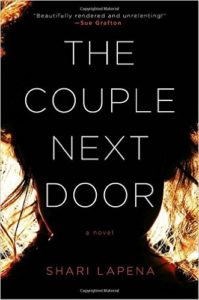Lying well is a great art – a con artist will agree, but so will the great writers. It is a much used device and character trait and if done well, the reader is drawn into the drama. Lying has many uses: to further the plot, to plant clues, create mystery and tension in a cat and mouse game of truth finding, to introduce information without being forthright about it, to pace the story and timing of reveals, to change direction in the plot, and to misdirect readers to increase the shock and thrill of a reveal.
All these uses make the lie a very powerful, multi-purpose tool.
Lying is more than the art of misdirection, although in a good mystery there’ll be plenty of red herrings and misdirection which increases the thrill of the reveals. Lying is about the relationships characters have with each other and with themselves. Who lies to whom?
In its simplest form, a character can either lie to herself or to someone else. Whether it’s about a personal flaw, a false belief which forms her worldview, or a moral justification which conflicts with an authority such as the law, a religious or ethical code, or it may be avoidance to face the consequences of a truth.
The art of a good lie is that the reader will begin to believe those lies, despite clues to the contrary. This increases the shock value of reveals. That’s what makes the cat and mouse game of truth versus lie so scintillating.
The danger of the lie is that it can alienate the reader. If your protagonist lies to characters, it had better be for a good reason because it will affect how your reader feels about the character. Every protagonist has a moral code and readers expect her to act within that code. The code may include lying all the time or only in certain circumstances such as to protect others or oneself, for personal gain, to hurt, to entrap, to avoid a truth. Depending on how this is done, reader emotion can range from sympathy to horror, and your protagonist can be seen as either heroic or villainous. We all lie, even our favorite heroes do, that’s part of what makes each of us human and our characters relatable. So, lying must be part of the writer’s toolkit.
Recently, I read two books which employed lies in very different ways. Both authors intrigued me with their choices and their consistent, believable execution of the lie. In both stories, lying was central to how each mystery was created and solved. However, the lies weren’t merely fibbing or speaking a falsehood, although that played into the dramas as well. In Death by a Honey Bee by Abigail Keam, most lies were justified because of a moral and ethical code which doesn’t fully conform to law enforcement’s rules which means adjusting the truth and meeting out justice from the amateur sleuth’s personal moral code. In The Couple Next Door, Shari Lapena primarily used omission, the withholding of information, by each character.
and their consistent, believable execution of the lie. In both stories, lying was central to how each mystery was created and solved. However, the lies weren’t merely fibbing or speaking a falsehood, although that played into the dramas as well. In Death by a Honey Bee by Abigail Keam, most lies were justified because of a moral and ethical code which doesn’t fully conform to law enforcement’s rules which means adjusting the truth and meeting out justice from the amateur sleuth’s personal moral code. In The Couple Next Door, Shari Lapena primarily used omission, the withholding of information, by each character.
Thes two ways of using lies in these novels couldn’t have been more different, but the effect was the same – a mystery was created, a puzzle needed to be solved and the sleuth (one a detective and the other an amateur) had to uncover the truth. Keam’s use of the lie, however, created a cat and mouse game filled with red herrings. Josiah Reynolds, a middle aged beekeeper has her own brand of lying and justice based on her personal Southern Kentucky code of justice. She lies to the police, lies to herself, and lies to others. Despite the lies the protagonist tells, or perhaps because of them, Keam manages to create a believable and likeable protagonist. Josiah’s lies to others sometimes comes in the form of pranks, like when she lies about her young and gay lawyer friend Matt being her lover.
 By contrast, Lapina’s characters, except for the detective, withheld major information which was slowly meted out to create a suspenseful novel which was hard to put down. Her trick, I think, was not to let the reader know immediately what information was withheld, or who was lying about what and only to use the reveals to move the plot forward. She used other forms of lying such as omission, secrets, lying to the police, lying to oneself. Lying to oneself was one of the most cunning devices, however. Without spoiling the plot, the mother, Anna suffers from post partum depression and her needing to face some hard facts about herself, lying to herself and to others about her condition, is excruciating and the tension builds as we want to know what really happened.
By contrast, Lapina’s characters, except for the detective, withheld major information which was slowly meted out to create a suspenseful novel which was hard to put down. Her trick, I think, was not to let the reader know immediately what information was withheld, or who was lying about what and only to use the reveals to move the plot forward. She used other forms of lying such as omission, secrets, lying to the police, lying to oneself. Lying to oneself was one of the most cunning devices, however. Without spoiling the plot, the mother, Anna suffers from post partum depression and her needing to face some hard facts about herself, lying to herself and to others about her condition, is excruciating and the tension builds as we want to know what really happened.
In this novel, everyone is hiding something, and no one is telling until and only if they absolutely have to. Masterfully done- a setting of every parent’s nightmare, a child has been kidnapped from Anna and Marco’s home while they were next door at the neighbour’s for a dinner party. Anna and Marco love their little girl and the torture of her being gone, of time passing and her not being found are excruciating. Detective Rasbach pulls out their secrets, one by one and slowly reveals the omissions.
The Couple Next Door is a must read for Lapena is not just a writer, she’s one of the Fates, weaving in a thread of omission, a thread of an incomplete truth, then gently pulling it, leaving it for a while only to come back to tug at it and then having it unravel. Keam’s Josiah Reynolds series is also a must read on not only how to make a lying protagonist likeable but also because Josiah has a refreshing worldview, albeit a little quirky.
The best way to learn to lie is to study the lie and the techniques used by Keam and Lapina are great studies (and reads), indeed.
